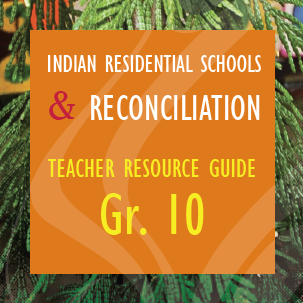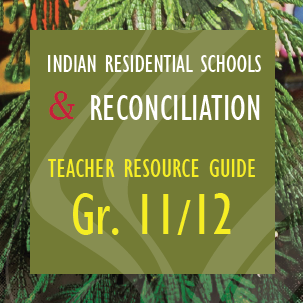Residential Schools and Colonial Impacts
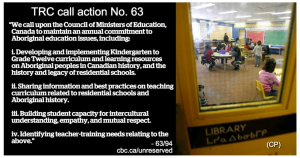
Douglas Treaties
For Activities, Information, and Primary documents:
In the News:
This document has the original wording of the treaties, including Teechamitsa – the land that our school is built on – pretty neat connection! click for link
BCTF’s E-book of lessons and resources including all resources needed for a blanket exercise.
Gladys We Never Knew: The life of a child in a BC Indian Residential School
This is a very powerful way of building empathy and getting deeper into Residential schools. The ideas and lessons are easily adapted to multiple age groups, and has activities that could be used in Social Studies, Fine Arts, and English.

150 Years of Loss: Residential School System in Canada, Edu-Kit
developed by fnesc – Available at the school; ask the Aboriginal Education Staff
A great starting place, and resource to enhance the learning experience.
-Timeline banners (large visuals) can be placed around the room for activities, such as discussion carousels, post-it thoughts, sequencing, or review
– Copies of primary Resources
-Map of Residential Schools in Canada
-Discussion Guide
Indian Residential Schools and Reconciliation: A Teacher’s resource Guide
by fnesc
Click images for link
Also Available in print at the school; ask the Aboriginal Education Staff
Where are The Children? Digital Exhibition
This powerful website has images, documents, survivor stories, timelines, maps, and more. A great resource for students and teachers to explore. Click image for access the the link:
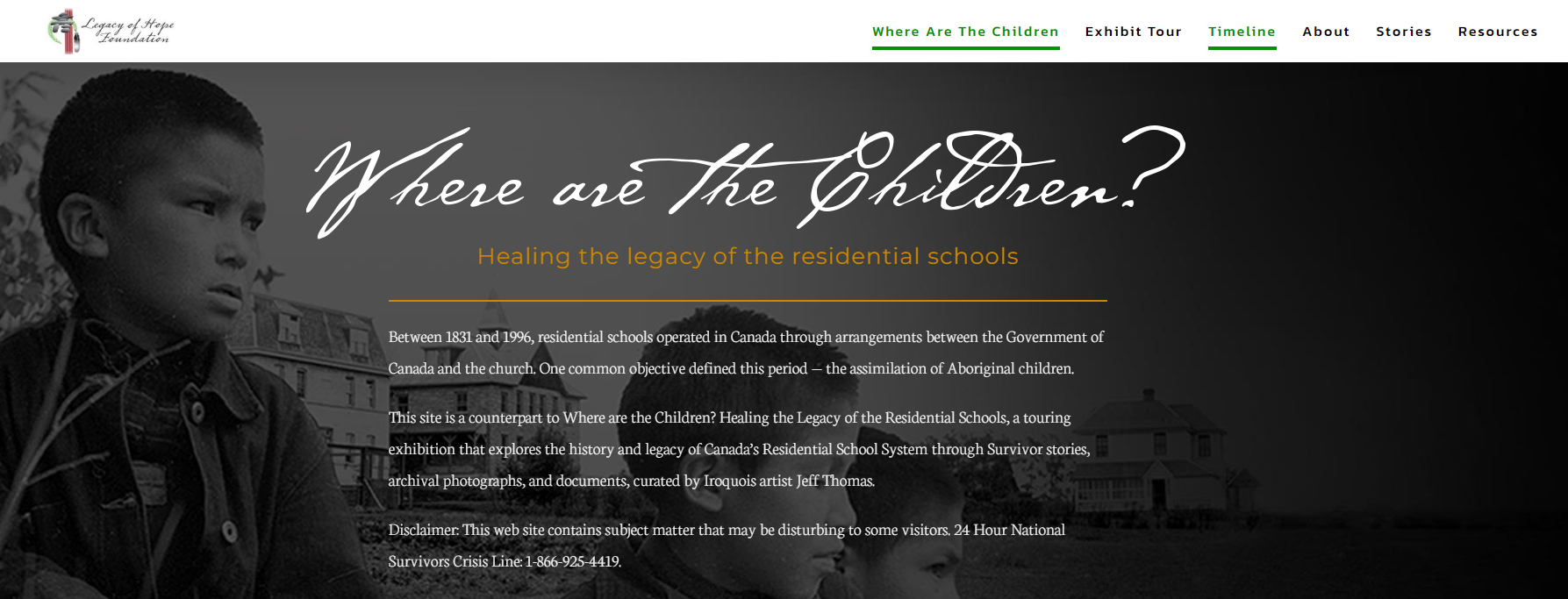 Legacy of Hope: Where are the Children
Legacy of Hope: Where are the Children
Project of Heart
Truth and Reconciliation Commission of Canada
Lots of historical documents, current events and media, TRC accounts and recommendations, official documents of the TRC
Click image for link
TRC Calls to Action Posters
Highlights of the Truth and Reconciliation Calls to Action with effective visuals. The posters could easily be used to instigate class discussions by projecting up or printing out for small groups to discuss why it is an important action, how effectively it is being fulfilled, and what more could be done.


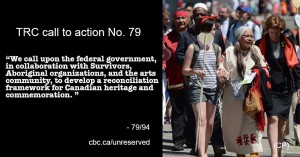
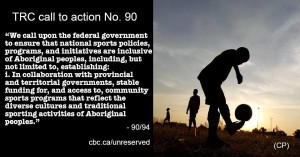
TRC posters – Click for Word Document
The Secret Path
Gordon Downie and Jeff Lemire’s musical and artistic project to tell the story of Chanie Wenjack, a boy that attempted to escape residential school, but never made it home, and to bring awareness to Indigenous issues in Canada.
Full Video:
Short video of one song, “The Stranger”:
Click here for official website
“Monster” by Dennis Saddleman
This is a powerful poem (read by Dennis) about his personal experience and feelings towards Residential schools.
“I hate you residential school, I hate you.
You’re a monster.
A huge hungry monster.
Built with steel bones. Built with cement flesh.
You’re a monster.”
— Excerpt from Dennis Saddleman’s poem, ‘Monster’
Giving up Identity
This is a simple but powerful activity for students. Have students write down 5-10 (you choose and set the same amount for all students) words that identify them (ex. Student, Daughter/Son/Child, Musician, Soccer player, Friend, Good Listener, Funny etc.). Ask them to think about how important these are to them, Ask them to tell a partner what they chose and why?
Use either different coloured paper or number them. It may be good to have students sit in a circle. Go through stages of forcing them to give up parts of their identity. First maybe they have to choose one to give up, then maybe you tell them that #2 or blue must be thrown in the middle. Maybe you walk around and steal one from each student. Go through until they are left with nothing. At the end or throughout, you give them new identities that reflect the experiences of residential school students (ex. Obedient, Quiet, Christian, Alone, Compliant, Labourer, Sick, Frightened, Violated, Alienated, Disconnected, Worthless, maybe give them new simplified names, etc.)
Debrief with students to discuss how that felt. Which pieces of identity hurt to lose the most? What was more difficult, choosing to give up something or having it taken away? How did you feel about the identity given to you?
Curio Documentaries
“Aboriginal Children Used as Test Subjects”
“Newly surfaced documents shine a light on experiments that were conducted on hundreds of aboriginal individuals, most of them young children, during and following World War II. Residential schools were the testing grounds for government scientists to observe the effects of several products on the malnourished bodies of aboriginal children without their consent or even their knowing.” – from Curio.ca
“Canada’s Residential School Apology”
“In June [2008], the Government of Canada apologized to Aboriginal Canadians for the way they were treated in residential schools. Thousands of Aboriginal children were forced into government-financed schools where many suffered physical and sexual abuse. In this News in Review story, we’ll look at that sad chapter in Canadian history and at the moving ceremony in the House of Commons.” – from curio.ca
The Oka Crisis: 500 Years of Resistance
by Gord Hill – Graphic Novel depiction of the Oka Crisis
Sixties Scoop Victims Demand Apology, Compensation
CBC News, June 2015
“It’s believed somewhere between 11,000 and 20,000 aboriginal children were removed from their homes and placed with new families in Canada, the U.S. and Europe.”
“‘We lost our language. We lost our connection to our home communities… We were victims of colonization and Canadians need to recognize that this is a part of our history,’ says Rajotte.”
Art of George Littlechild
George Littlechild uses striking images to represent and contrast First Nations culture with Canada’s colonial history and culture.
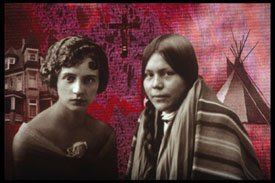 Click George Littlechild’s “Cross Examination 2” for link
Click George Littlechild’s “Cross Examination 2” for link

“White Privilege: Unpacking the Invisible Knapsack”
by Peggy McIntosh
“I was taught to see racism only in individual acts of meanness, not in invisible systems conferring dominance on my group”
This is a reading and activity to discuss the subtle and hidden forms of racism in our society by acknowledging the privileges that many people take for granted and the challenges faced by non-white individuals on a daily basis.
The list can be used as a class activity in which students close their eyes and throw rocks into a bucket for each statement they relate to. Anonymity allows for a more serious reflection, while the sound of many stones being thrown in is powerful. Also, students could tick on paper how many they relate to.
“Post-Colonial”
Creative non-Fiction writing by Margaret Atwood
A powerful short piece that examines the colonial reminders in our society, the remnants of guilt and gain, and the problematic construction of “we” and “them.”
Atwood – Post-Colonial – PDF
“Heroes”
Rap Lyrics by Wab Kinew
A recognition of First Nations’ Heroes through history.
